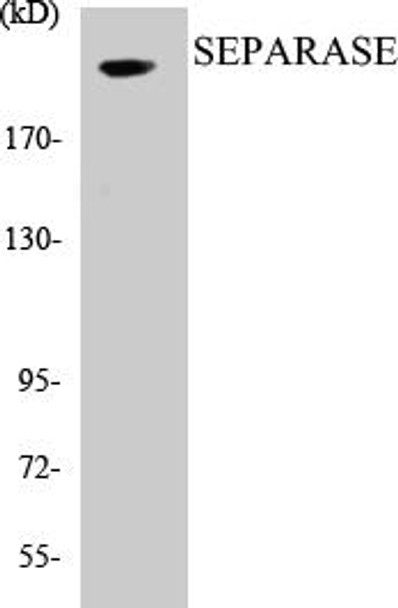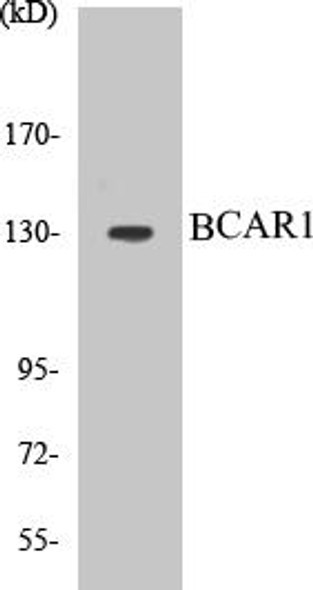Description
SEPARASE Colorimetric Cell-Based ELISA Kit
The Separase Colorimetric Cell-Based ELISA Kit is a cutting-edge tool designed for the accurate measurement of separase levels in cell lysates. This kit offers high sensitivity and specificity, allowing for precise and reproducible results in a wide range of research applications.Separase is an important enzyme involved in cell division, playing a critical role in the regulation of chromosome segregation. Dysregulation of separase has been implicated in various diseases, including cancer and developmental disorders.
By accurately measuring separase levels, researchers can gain valuable insights into the mechanisms underlying these conditions and potentially identify new therapeutic targets.Overall, the Separase Colorimetric Cell-Based ELISA Kit is a valuable asset for researchers seeking to study separase function and its implications in disease, providing reliable and accurate results for their experiments.
| Product Name: | SEPARASE Colorimetric Cell-Based ELISA |
| Product Code: | CBCAB00358 |
| ELISA Type: | Cell-Based |
| Target: | SEPARASE |
| Reactivity: | Human, Mouse |
| Dynamic Range: | > 5000 Cells |
| Detection Method: | Colorimetric 450 nmStorage/Stability:4°C/6 Months |
| Format: | 96-Well Microplate |
The SEPARASE Colorimetric Cell-Based ELISA Kit is a convenient, lysate-free, high throughput and sensitive assay kit that can detect SEPARASE protein expression profile in cells. The kit can be used for measuring the relative amounts of SEPARASE in cultured cells as well as screening for the effects that various treatments, inhibitors (ie siRNA or chemicals), or activators have on SEPARASE.
Qualitative determination of SEPARASE concentration is achieved by an indirect ELISA format. In essence, SEPARASE is captured by SEPARASE-specific primary antibodies while the HRP-conjugated secondary antibodies bind the Fc region of the primary antibody. Through this binding, the HRP enzyme conjugated to the secondary antibody can catalyze a colorimetric reaction upon substrate addition. Due to the qualitative nature of the Cell-Based ELISA, multiple normalization methods are needed:
| 1. | A monoclonal antibody specific for human GAPDH is included to serve as an internal positive control in normalizing the target absorbance values. |
| 2. | Following the colorimetric measurement of HRP activity via substrate addition, the Crystal Violet whole-cell staining method may be used to determine cell density. After staining, the results can be analysed by normalizing the absorbance values to cell amounts, by which the plating difference can be adjusted. |
| Database Information: | Gene ID: 9700, UniProt ID: Q14674, OMIM: 604143, Unigene: Hs.153479 |
| Gene Symbol: | ESPL1 |
| Sub Type: | None |
| UniProt Protein Function: | separase: a caspase-like protease, which plays a central role in the chromosome segregation by cleaving the SCC1/RAD21 subunit of the cohesin complex at the onset of anaphase. During most of the cell cycle, it is inactivated by different mechanisms. Regulated by at least two independent mechanisms. First, it is inactivated via its interaction with securin/PTTG1, which probably covers its active site. Second, phosphorylation inactivates it. It is completely phosphorylated during mitosis and dephosphorylated during anaphase. Two alternatively spliced isoforms have been described. |
| UniProt Protein Details: | Protein type:Protease; EC 3.4.22.49 Chromosomal Location of Human Ortholog: 12q Cellular Component: centrosome; nucleus; cytosol Molecular Function:protein binding; catalytic activity; cysteine-type peptidase activity Biological Process: establishment of mitotic spindle localization; homologous chromosome segregation; mitotic sister chromatid segregation; apoptosis; negative regulation of sister chromatid cohesion; positive regulation of mitotic metaphase/anaphase transition; cytokinesis; mitotic cell cycle; proteolysis; meiotic spindle organization and biogenesis |
| NCBI Summary: | Stable cohesion between sister chromatids before anaphase and their timely separation during anaphase are critical for chromosome inheritance. In vertebrates, sister chromatid cohesion is released in 2 steps via distinct mechanisms. The first step involves phosphorylation of STAG1 (MIM 604358) or STAG2 (MIM 300826) in the cohesin complex. The second step involves cleavage of the cohesin subunit SCC1 (RAD21; MIM 606462) by ESPL1, or separase, which initiates the final separation of sister chromatids (Sun et al., 2009 [PubMed 19345191]).[supplied by OMIM, Nov 2010] |
| UniProt Code: | Q14674 |
| NCBI GenInfo Identifier: | 308153600 |
| NCBI Gene ID: | 9700 |
| NCBI Accession: | Q14674.3 |
| UniProt Related Accession: | Q14674 |
| Molecular Weight: | 2120 |
| NCBI Full Name: | Separin |
| NCBI Synonym Full Names: | extra spindle pole bodies homolog 1 (S. cerevisiae) |
| NCBI Official Symbol: | ESPL1 |
| NCBI Official Synonym Symbols: | ESP1; SEPA |
| NCBI Protein Information: | separin; caspase-like protein ESPL1; extra spindle poles like 1; separin, cysteine protease; extra spindle poles-like 1 protein |
| UniProt Protein Name: | Separin |
| UniProt Synonym Protein Names: | Caspase-like protein ESPL1; Extra spindle poles-like 1 protein; Separase |
| Protein Family: | Separin |
| UniProt Gene Name: | ESPL1 |
| UniProt Entry Name: | ESPL1_HUMAN |
| Component | Quantity |
| 96-Well Cell Culture Clear-Bottom Microplate | 2 plates |
| 10X TBS | 24 mL |
| Quenching Buffer | 24 mL |
| Blocking Buffer | 50 mL |
| 15X Wash Buffer | 50 mL |
| Primary Antibody Diluent | 12 mL |
| 100x Anti-Phospho Target Antibody | 60 µL |
| 100x Anti-Target Antibody | 60 µL |
| Anti-GAPDH Antibody | 60 µL |
| HRP-Conjugated Anti-Rabbit IgG Antibody | 12 mL |
| HRP-Conjugated Anti-Mouse IgG Antibody | 12 mL |
| SDS Solution | 12 mL |
| Stop Solution | 24 mL |
| Ready-to-Use Substrate | 12 mL |
| Crystal Violet Solution | 12 mL |
| Adhesive Plate Seals | 2 seals |
The following materials and/or equipment are NOT provided in this kit but are necessary to successfully conduct the experiment:
- Microplate reader able to measure absorbance at 450 nm and/or 595 nm for Crystal Violet Cell Staining (Optional)
- Micropipettes with capability of measuring volumes ranging from 1 µL to 1 ml
- 37% formaldehyde (Sigma Cat# F-8775) or formaldehyde from other sources
- Squirt bottle, manifold dispenser, multichannel pipette reservoir or automated microplate washer
- Graph paper or computer software capable of generating or displaying logarithmic functions
- Absorbent papers or vacuum aspirator
- Test tubes or microfuge tubes capable of storing ≥1 ml
- Poly-L-Lysine (Sigma Cat# P4832 for suspension cells)
- Orbital shaker (optional)
- Deionized or sterile water
*Note: Protocols are specific to each batch/lot. For the correct instructions please follow the protocol included in your kit.
| Step | Procedure |
| 1. | Seed 200 µL of 20,000 adherent cells in culture medium in each well of a 96-well plate. The plates included in the kit are sterile and treated for cell culture. For suspension cells and loosely attached cells, coat the plates with 100 µL of 10 µg/ml Poly-L-Lysine (not included) to each well of a 96-well plate for 30 minutes at 37°C prior to adding cells. |
| 2. | Incubate the cells for overnight at 37°C, 5% CO2. |
| 3. | Treat the cells as desired. |
| 4. | Remove the cell culture medium and rinse with 200 µL of 1x TBS, twice. |
| 5. | Fix the cells by incubating with 100 µL of Fixing Solution for 20 minutes at room temperature. The 4% formaldehyde is used for adherent cells and 8% formaldehyde is used for suspension cells and loosely attached cells. |
| 6. | Remove the Fixing Solution and wash the plate 3 times with 200 µL 1x Wash Buffer for five minutes each time with gentle shaking on the orbital shaker. The plate can be stored at 4°C for a week. |
| 7. | Add 100 µL of Quenching Buffer and incubate for 20 minutes at room temperature. |
| 8. | Wash the plate 3 times with 1x Wash Buffer for 5 minutes each time. |
| 9. | Add 200 µL of Blocking Buffer and incubate for 1 hour at room temperature. |
| 10. | Wash 3 times with 200 µL of 1x Wash Buffer for 5 minutes each time. |
| 11. | Add 50 µL of 1x primary antibodies (Anti-SEPARASE Antibody and/or Anti-GAPDH Antibody) to the corresponding wells, cover with Parafilm and incubate for 16 hours (overnight) at 4°C. If the target expression is known to be high, incubate for 2 hours at room temperature. |
| 12. | Wash 3 times with 200 µL of 1x Wash Buffer for 5 minutes each time. |
| 13. | Add 50 µL of 1x secondary antibodies (HRP-Conjugated AntiRabbit IgG Antibody or HRP-Conjugated Anti-Mouse IgG Antibody) to corresponding wells and incubate for 1.5 hours at room temperature. |
| 14. | Wash 3 times with 200 µL of 1x Wash Buffer for 5 minutes each time. |
| 15. | Add 50 µL of Ready-to-Use Substrate to each well and incubate for 30 minutes at room temperature in the dark. |
| 16. | Add 50 µL of Stop Solution to each well and read OD at 450 nm immediately using the microplate reader. |
(Additional Crystal Violet staining may be performed if desired – details of this may be found in the kit technical manual.)






